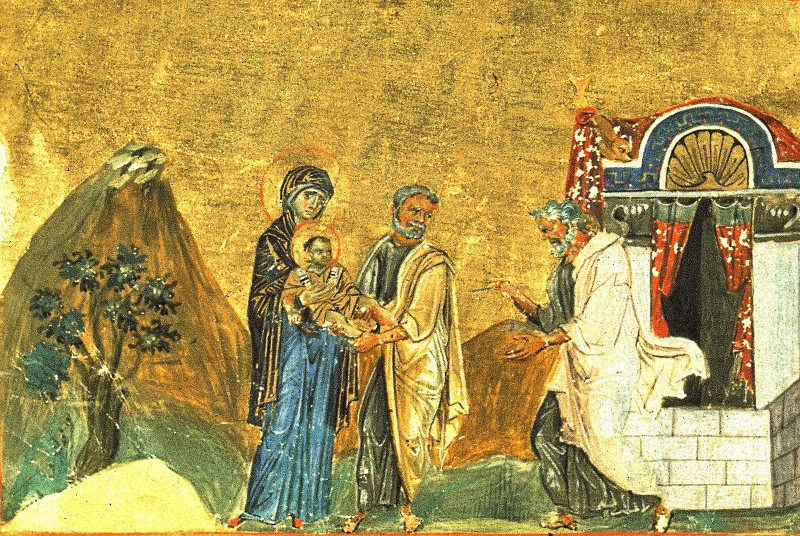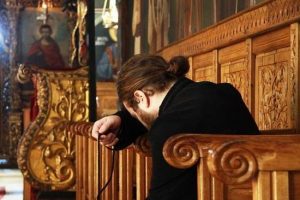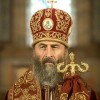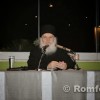On January 1/14, the Orthodox Church celebrates the Lord’s Circumcision. Although this feast day is one of the Church’s great and specially venerated days, it can be rather puzzling for the unchurched. The meaning of this feast often remains mysterious not only for people new to the Church, but for many “experienced” parishioners as well.
We asked Archpriest George Kovalenko, press secretary of the Primate of the Ukrainian Orthodox Church, and Archpriest Andrei Tkachev, rector of the Church of St. Agapit in Kiev, to explain the meaning and symbolism of the Lord’s Circumcision.
Archpriest George Kovalenko
 There is nothing accidental in the church calendar. Veneration of the Lord’s Circumcision is additional evidence by the Church for the truth of the Divine Incarnation. That which is clear and not confusing to us was confusing to the first Christians. When the Church established a day for venerating the Lord’s Circumcision, it insisted again and again that Christ was truly Incarnate and that God had truly become a man having flesh. Christ is not an angel; Christ is the God-Man.
There is nothing accidental in the church calendar. Veneration of the Lord’s Circumcision is additional evidence by the Church for the truth of the Divine Incarnation. That which is clear and not confusing to us was confusing to the first Christians. When the Church established a day for venerating the Lord’s Circumcision, it insisted again and again that Christ was truly Incarnate and that God had truly become a man having flesh. Christ is not an angel; Christ is the God-Man.
Just as we see in Christ the union of the Divine and human, so too in Christ do we see the union of the Old and New Testaments. Inasmuch as circumcision was an Old Testamental covenant, it witnesses to the fact that Christ belongs to God’s chosen people, that He is from its source (and this is confirmed by all the prophecies that were before Christ).
Christ is also the beginning of the New Testament. We also see in history how He will receive Baptism from John the Baptist and speak these words: “Now is all righteousness fulfilled,” which could also have been said, were He not still an infant, at His circumcision. So, too, do we all need to follow Christ’s example. If there are established church traditions, church rites, church mysteries, we should fulfill them, just as our Lord Jesus Christ fulfilled all Old Testamental requirements. For, as He said, He came not “to destroy, but to fulfill.” So, too, with us: performing all the rites and everything external, we should fill the meaning of our lives and our worldviews, so that that which we confess outwardly might change us inwardly and, through us, change the whole world around us.
Archpriest Andrei Tkachev
 Wherever you are on this day, know that at His circumcision Christ was given the name Jesus. The eighth day after birth is the day for naming. The name Jesus is the divine name Joshua, God the Savior. This is the Lord’s name that was given to Him by his father and Mother. The angel had told Joseph that when Mary bears a son, He should be called Jesus. And the Mother was told separately: when you bear a Son, you shall call His name Jesus.
Wherever you are on this day, know that at His circumcision Christ was given the name Jesus. The eighth day after birth is the day for naming. The name Jesus is the divine name Joshua, God the Savior. This is the Lord’s name that was given to Him by his father and Mother. The angel had told Joseph that when Mary bears a son, He should be called Jesus. And the Mother was told separately: when you bear a Son, you shall call His name Jesus.
This is the Savior’s name: divine, holy, and mighty. Thus, this day, in principle, is the day of the Jesus Prayer, that is, of the prayer of Jesus Christ’s name, inasmuch as on this day the Savior’s name was revealed to the world. This is the day on which iron first touched the body of Jesus Christ. His foreskin was circumcised; the baby cried, and blood flowed.
But for us this is the time of the Jesus Prayer: “Lord Jesus Christ, Son of God, have mercy on me a sinner…”
Every Christian should pray the Jesus Prayer at least a little, at times. This is especially the case on the day of St. Basil the Great, the Lord’s Circumcision – the day on which the world was given the name of the Savior: Jesus of Nazareth. Therefore, on the day of St. Basil the Great, the old style New Year, pray the Jesus Prayer!
Translated from the Russian.




















